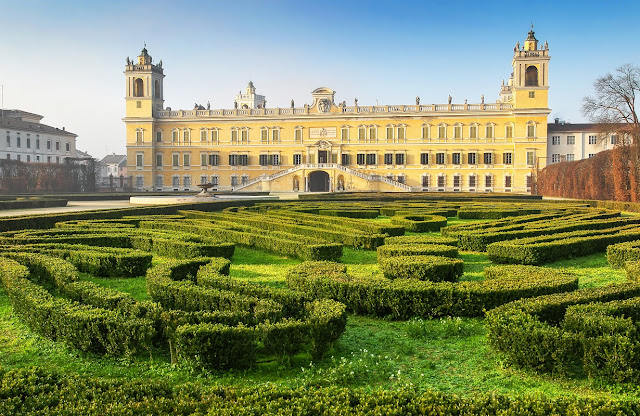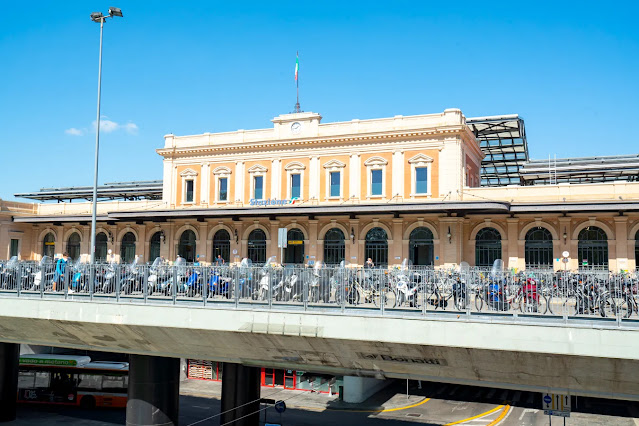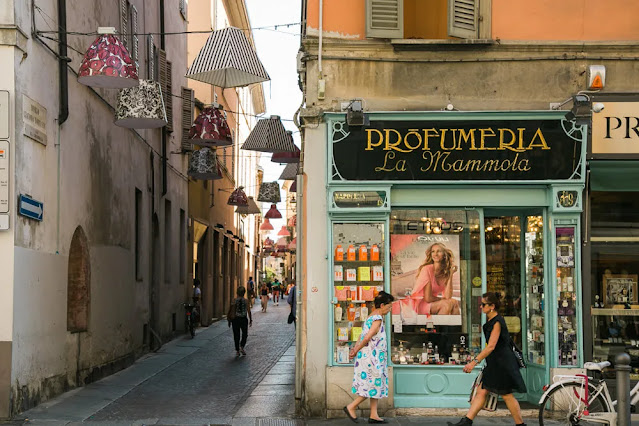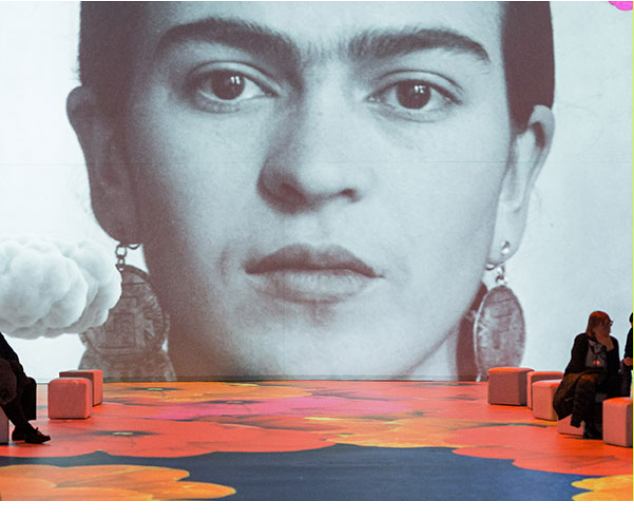Parma
Why visit Parma? In my opinion, three reasons.
Firstly, it is one of Italy’s most beautiful towns, secondly, it is a foodie haven, and, thirdly, if you are into the arts, it is home to famous artists such as the Renaissance artist Correggio (1489), who between 1526 and 1530 decorated the dome of Parma Cathedral with his great masterpiece The Assumption of the Virgin. The painting depicts cherubic figures receding upwards and gives the illusion of an open sky as the Virgin ascends into heaven. It was also home to opera composer Guiseppe Verdi, whose work is central to the repertoire of pretty much every opera house in the world. Although he was born in nearby Busseto, each October, both towns celebrate the festival of Verdi, featuring his famous works such as Aida, Rigoletto, Otello, Nabucco and La Traviata. Parma is filled with his music more than ever during this time and is well worth visiting then if you are an opera lover.
Parma has been through a lot since it was built by the ancient Romans in 183 BC only to be destroyed in the middle ages. It then became a tug-of-war between the French and Italians because of its strategic location along the ancient Via Aemilia Road (aka the Via Emilia) and its valuable river which divides the town in two and flows into the Po. This accounts for the varied architectural styles that can be seen in the town, that range from Romanesque to Rennaisance to Baroque.
Food festivals also populate the Parma calendar year-round. In June, the Gola Gola Festival pays homage to all aspects of Emilia-Romagna's rich cuisine, while smaller soirees such as Festival del Prosciutto di Parma. In September other events toast to the provenance of Parma's most-famous ingredients. Check Parma's Tourist Office website for further information.
Also, like Bologna, it is also home to one of the oldest universities in the world.
Read more about what to see and do in nearby beautiful Bologna here in my blog.
The Chamber of Saint Paul and Saint Catherine’s in the Cathedral of Parma. You can also enjoy the beautiful works of Correggio in the National Gallery (the Pinacoteca that has the most beautiful entrance to the world: the Farnese Theatre!).
Though small in size geographically and population, a bit like the "Goldilocks effect, Parma is neither too big nor too small. However, it is a giant in its contribution to Italian cuisine. In fact, the city of Parma received the UNESCO title of “Creative City of Gastronomy” in 2015, and was later appointed as the “Capital of Culture 2020” in 2018. Parma is the gastronomic centre of the “Italian Food Valley”, with about a third of the labour force working in the agri-food and gastronomic industry. In Parma, you'll find local artisans producing prosciutto, pomodoro (tomatoes), Lambrusco and Parmigiano-Reggiano, the same way they have done for many many generations.
The city is also classified by the Qualivita Foundation as the first Italian city for Agri-food Qualitative Supremacy and was appointed a seat on the European Food Safety Authority. Parma’s vision of food and gastronomy is intrinsically linked to environmental sustainability being based on local production and urban-rural reciprocity. What's not to love about that!
Brands from this region are known internationally, e.g. icons like Barilla for pasta, or find yourself the fields of red ripe tomatoes destined for Mutti Pomodoro's polpa, paste, and passata. A brand icon of Italy, Mutti was first established in 1899 by local brothers Marcellino and Ugo Mutti, whose father, Giovanni, had experimented with crop rotation throughout the 1850s — a farming method considered innovative for the times. Every year in the summer harvest period, the company — now headed by Giovanni's great-great-nephew Francesco Mutti — honours their farmers at the Golden Tomato Awards party, celebrating their now globally-acknowledged product.
Parmalat and the stunning Acqua di Parma Italian lifestyle and fashion company that produces fragrances, candles, bathrobes, and leather accessories and is now part of the LVMH stable, were founded and are also based here.
Tip: When visiting Parma, be sure to stop by Mr. Mutti and his staff's most frequented haunt, Ristorante Cocchi, for Anolini in Brodo (round pasta pockets stuffed with beef and Parmigiano Reggiano in broth) and trio di Tortelli - a sampler of square pasta pockets stuffed with ricotta and spinach, pumpkin, and potato with Fragno black truffles.
However, let's not forget that Parma is not just about its fabulous food, although that ALONE is reason enough to put Parma on your itinerary if you love Italian food, there are some amazing things to see as well whilst there.
When you arrive in Parma, just a short walk from the train station, you'll be greeted by the Salumeria Garibaldi which has been welcoming visitors since 1829 - its current owners, two friends, set up shop in the 1950s. Take a seat at the counter and let the friendly and knowledgeable staff take you on a culinary adventure around the region. You won't be the first to fall for what's on offer here! You will be seated amongst the glorious wheels of aged Parmigiano-Reggiano, slabs of Prosciutto di Parma, Salame Felino hanging from the ceiling, porcini mushrooms from nearby Borgotaro, and bottle upon bottle of Lambrusco and other local wines - this my friends is heaven!
Parma 'old town' is a largely pedestrian-only town- which is great because you will need to walk a lot to help work off all of the amazing food you will eat here.
Getting lost through the classic medieval alleyways of Parma is one of the best ways to discover the city as you never know what you may come across – to see or to eat (be warned there is a lot of that)!
What to see and do in Parma.
There is much more to see and do in Parma than we can cover in one post. Many people opt out of Parma because they have tight schedules and stick to the major cities, however, hopefully, this will change your mind if you have the time. I will focus on what to do in one day, because typically that's all most people allocate, but will add in some extras for those with more time who can add extra activities as time permits.
Train Station Parma
This takes me to food tours in Parma, - they are a must - if you only have time for one - you need to ensure you see how real Parmigiana Reggiano cheese is made. Production of this incredible cheese is tightly regulated on everything from the cow's diet, to the curing process (which can be anywhere from 18 months to 3 years, with the 'peak' perfection considered to be at around 2 years POD). Eating the 'real deal' cheese will make you realise you have been eating sawdust passed off as grated parmesan cheese up until now. Parmiagiana Reggiano is the star of this area and will be the focus of any visit. It is best served in chunks (it is a crumbly cheese so neat slices are impossible) with some aged Balsamic and Prosciutto, washed down with a local wine - my preference being the same as the local's libation of choice, Lambrusco.
Allow at least 1/2 day for one of these tours or a full day if adding in Modena as well. If coming from Florence or Bologna, this will be a fairly long, but doable, day.
Piazza Giueseppe Garibaldi
Every Italian town has a main piazza that is the heart of the town. In Parma, that is the Piazza Garibaldi. Built over an ancient Roman Forum, you can see nearby monuments as testimony, such as the Ponte Romano to the west, with its arches visible from below, the Roman theater and the amphitheater to the south.
The piazza was originally called the Piazza del Comune or Piazza Grande and was designed to be the location of political power, and has, since Roman times, served as the civil, religious and commercial hub of Parma. The name was changed to "Piazza Garibaldi" in June 1882 to commemorate the well-known Italian farmer turned soldier hero Giuseppe Garibaldi, who was arrested in 1867 for trying to reunite Rome and the Kingdom of Italy, and who had died a few days prior to the establishment of the Piazza. As well as a statue of the man himself, on the 150th anniversary of the Unification of Italy in 2011, a mural by Master Federico D'Agostino depicting the arrest of Garibaldi was painted on the external wall of a building at the crossroads between the square and via Cavour.
The piazza was originally called the Piazza del Comune or Piazza Grande and was designed to be the location of political power, and has, since Roman times, served as the civil, religious and commercial hub of Parma. The name was changed to "Piazza Garibaldi" in June 1882 to commemorate the well-known Italian farmer turned soldier hero Giuseppe Garibaldi, who was arrested in 1867 for trying to reunite Rome and the Kingdom of Italy, and who had died a few days prior to the establishment of the Piazza. As well as a statue of the man himself, on the 150th anniversary of the Unification of Italy in 2011, a mural by Master Federico D'Agostino depicting the arrest of Garibaldi was painted on the external wall of a building at the crossroads between the square and via Cavour.
If you have been traveling around Italy, you will recognise that there are lots of places named after Garibaldi - and this is definitely not the only Piazza Garibaldi in Italy - if you are wondering why- this article can help solve the question.
In the Piazza is the Palazzo del Governatore (now municipal offices), built in 1282 as the Palazzo dei Mercanti (merchants' guild). The Palazzo Vecchio (another name that pops up all over Italy!) was constructed in 1221 and is lined with loggia and has lovely frescoed salons inside.
In this square, there are also some important religious institutions: the Collegiate Church of San Martino, the Church of Madonna delle Nevi and the Church of Santa Croce.
The sundials of the Governor's palace are particularly interesting and include a sundial with real and average time. You can read more about these here.
Whilst the Piazza is one of the busiest spots in town and home to bars and elegant shops, there is not a great deal to see and do here (compared to Piazzas in other major cities) - but it is a good central point to start your tour of the town (many of the tours start here) and of course- the many smaller cobbled streets that lead off the Piazza are filled with bars and restaurants that will be less touristy and more authentic, so worth visiting.
Markets
Markets are big in Parma - not surprising given the 'Paddock to Plate' mentality of the region with their produce.Food markets mostly occur every Wednesday and Saturday. They are hidden in the narrow streets and in the open piazzas. They do, however, always seem to be in the same “designated” spot. No matter what they are selling, the best part of street markets is people-watching.
Just note: All street markets in Italy are usually open only in the mornings. Expect the market to set up early and close at about 1:00 pm. So if you are only going to Parma in the afternoon- you may not see many at all.
If you only have time for one, then the Piazza Ghiaia food market (which also these days sells more than food), draws huge crowds on Wednesday and Saturday mornings when the food market stalls are piled high with ham hocks, cheese, aged balsamic vinegar, fresh pasta and produce from across the region.
As a bonus, Parma's architectural significance is obvious here, although it is hard to see when all of the stalls are up - so outside the times of the markets is also worthwhile if architecture is your thing. The market itself dates back to the 13th century — local architect Nicola Bettoli added the Doric portico in the late 1830s (shown on the left in the picture below) and the Verona marble staircase was commissioned in 1856 to highlight the city's great wealth.
Ducal Palace
After the unification of Italy, it became a state possession, and in 1870 it was acquired by the province of Parma and is now home to ALMA, a world-renowned Italian culinary school.
Entry only with a guided tour. The best place to find the schedule is on the palace's Facebook page
 The Pilotta Palace
The Pilotta Palace
The name of the building comes from the ancient game "pelota" often played in the courtyards of the estate.
Today, the palace hosts several museums, including the National Gallery, the Palatine Library and the Archeological Museum. Inside the building, there is also a theatre, and during summer outdoor events are organised in its gardens. Again, this makes seeing a lot in a short amount of time easier (although I could spend a day here alone!!!).
Details relating to the tourist sites in the complex can be found here.
Duomo di Parma.
Consecrated in 1106, the Duomo di Parma, shown on the left, features an intricately frescoed ceiling and a stunning dome painted by Antonio da Correggio, visiting the Duomo is absolutely one of the top things to do in Parma.The cathedral is also free to visit and doesn’t take long to see, making it an easy addition to even a brief Parma itinerary. Like everywhere- they also have a leaning tower - in this case, the clock tower near the Duomo!
Parma Baptistery
Benedetto Antelami supervised its construction and executed almost all the decorative sculptures, typical of medieval iconography. The lowest part of the baptistery is encircled with relief sculptures of animals, fabulous beasts, creatures from hell, sea monsters, centaurs, mermaids, unicorns and Zodiac signs.
The north door or Portale della Vergine is decorated with scenes of the Adoration of the Magi and the Annunciation, the twelve prophets, the Tree of Jacob on the right, the Tree of Jesse on the left and the Tree of life on the inside. The west door or Portale del Giudizio has a figure of the Redeemer in the lunette. The south door is known as the Portale della Vita or Door of Life and the scene in its lunette shows a man eating honey in a tree with two rodents and a dragon at the base while on the sides are the chariots of Sun and Moon.
In the interior, a sixteen-sided polygon, are the notable sculptures by Benedetto Antelami depicting the Months, the Seasons and the Signs of Zodiac. Above the altar, in the semi-dome, is a Christ in Glory surrounded by the symbols of the four evangelists and two angels.
The north door or Portale della Vergine is decorated with scenes of the Adoration of the Magi and the Annunciation, the twelve prophets, the Tree of Jacob on the right, the Tree of Jesse on the left and the Tree of life on the inside. The west door or Portale del Giudizio has a figure of the Redeemer in the lunette. The south door is known as the Portale della Vita or Door of Life and the scene in its lunette shows a man eating honey in a tree with two rodents and a dragon at the base while on the sides are the chariots of Sun and Moon.
In the interior, a sixteen-sided polygon, are the notable sculptures by Benedetto Antelami depicting the Months, the Seasons and the Signs of Zodiac. Above the altar, in the semi-dome, is a Christ in Glory surrounded by the symbols of the four evangelists and two angels.
Even if not for religious reasons, this building is worth the visit for its sheer beauty.
Teatro Farnese
When visiting Parma’s famous Teatro Farnese, it’s the smell that hits you first: the entire theater is made out of wood! Built in 1618, the Teatro Farnese is one of the only remaining Renaissance theaters in the world. It is spectacular!
National Archaeological Museum
Founded in 1760 as the Ducal Museum of Antiquity, the National Archaeological Museum in Parma is one of the oldest museums in Italy!
The museum covers not only (as expected) Roman history but also houses artifacts from Ancient Egypt and other ancient cultures.
Rounding out your one day in Parma, if time permits, a stroll through the Parco Ducale is very pretty and you’ll need to ensure you have time to wander down Via Ferdinando Maestri. This street is adorned with lamps and lanterns which look beautiful at night. You’ll have a backing track of some classic Italian opera whilst you wander. It is best wandered slowly as you recount a wonderful day in Parma.
The museum covers not only (as expected) Roman history but also houses artifacts from Ancient Egypt and other ancient cultures.
A bit further afield.
Salsomaggiore Terme
If you stay in the area, you might also like to include the thermal springs. Based in the nearby green hills, this small location near Parma is a well-known destination for thermal spa tourism. The ideal place when seeking the ultimate relaxation and getaway. Numerous spas are scattered all around the Parmesan countryside where you can pamper yourself with health and beauty treatments.
Getting there
Getting to Parma is relatively easy - it is only about 1 hr north-west of Bologna by train or driving from Bologna and just under 2 hrs from Florence. It is also close to Modena, and many people visit both of these towns on the same day, although I recommend extending your stay for at least one night so you have more time to eat the wonderful food and visit the wineries of the area.
Obviously, Parma does not have the long list of historic, architectural or artistic attractions that the bigger cities have, but what it has is very worthwhile. The thing about Parma is that it gives you a break from the bustle of the bigger cities and allows you to soak up the true feel of Italy, its food.
If you really love Italy and its food, it is a must on your bucket list while in Italy.
This blog is part of the Rosegoes Europe series.














.webp)











